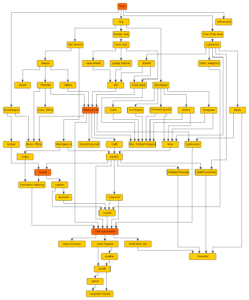28, 2012
Sales Tip of the Day: Mapping your sales calls
Map your sales calls before you pick up the phone – create a “Call Map” and a “Conversation Tree.” This is a primary activity I recommend to salespeople (and those selling their products that don’t consider themselves a “salesperson” such as company founders and CEOs…).
A “Call Map” is simply a flow chart or activity map where you start with the action of the call itself, then consider each available outcome once your dial the prospect’s phone number.
For example, once you dial the phone number, there are a number of possible outcomes:
- Voicemail
- Voicemail that states that the prospect is ‘out of the office’ until the end of the week
- No answer without voicemail
- The prospect’s assistant will answer
- You will be automatically route to the prospect’s assistant’s voicemail
- The prospect answers the phone
- Wrong number
For each of these outcomes from the activity of the phone call, you then consider all possible outcomes. For the “Voicemail” option, what will your message be? Write this done ahead of the call.
Considerations for your voicemail should include:
- Is this the first time you are calling this prospect?
- Does the prospect know you? Is this is a new call or warm lead?
- Are they expecting your call?
- Is this a blind referral or a warm referral?
- Have you talked with this prospect before – is this a follow up from a conversation at a conference or other event?
- Are you responding to an inbound call or email from the prospect?
- What action would you like the prospect to take?
- What is the probability that the prospect will return your call?
- And so on…
Your voicemail script should differ based on these considerations. Whew – and that’s just for the outcome of “Voicemail”!
You should perform this exercise for each possible outcome from the activity of your outbound call. This is a “Call Map.”
The “Conversation Tree” is specific to the outcome that the prospect answers the phone. You must consider:
- The prospect knows/remembers you and has time to talk
- The prospect knows/remembers you and doesn’t have time to talk
- The prospect doesn’t know/remember you and states that she is unavailable
- The prospect doesn’t know/remember you, does not explicitly that she is unavailable to talk currently, but is clearly distracted.
- etc…
For each of these outcomes arising from “#6 – prospect answers the phone,” you should have a script, or at least notes about what questions you plan to ask, then a map of how to respond to each answer.
If this sounds like a lot of work, it’s because it is. And when you do this a few times, it will be reusable and also burn these “Call Maps” and “Conversation Maps” into your brain. It will soon become a part of your daily practice of making calls.
Try it.

